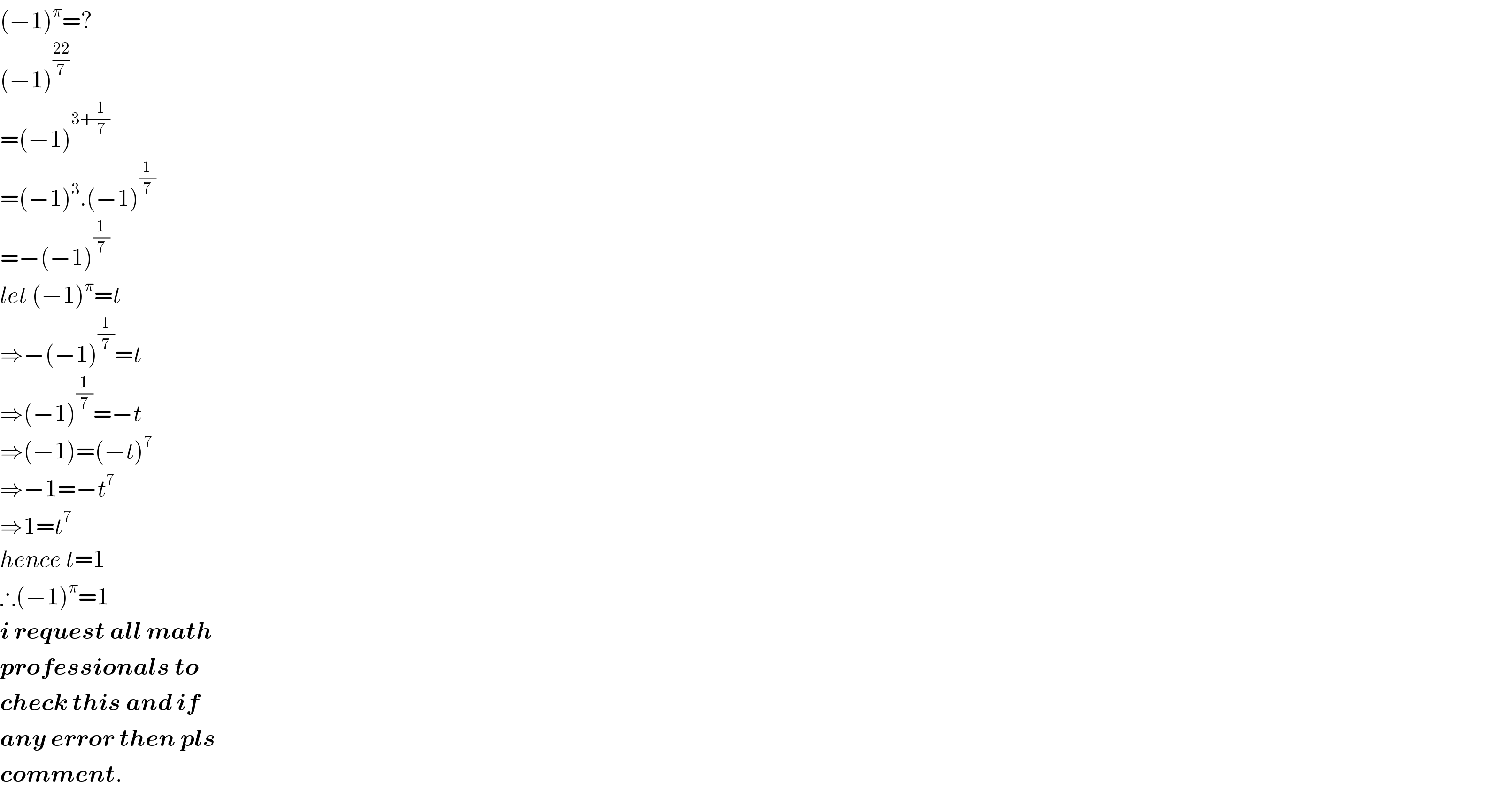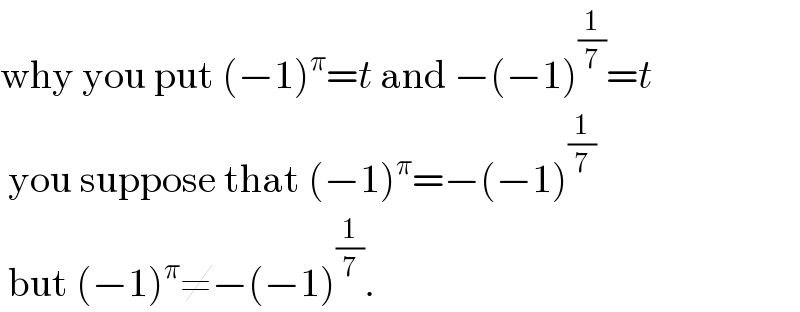
Question and Answers Forum
Question Number 110197 by redmiiuser last updated on 27/Aug/20

Commented by Dwaipayan Shikari last updated on 27/Aug/20

Commented by Aziztisffola last updated on 27/Aug/20

Commented by Rasheed.Sindhi last updated on 27/Aug/20

Commented by JDamian last updated on 27/Aug/20
![(−1)^((22)/7) =[(−1)^(22) ]^(1/7) =(1)^(1/7) =1^(1/7) Why do you wrongly assume π=((22)/7)?](Q110241.png)
Answered by mr W last updated on 27/Aug/20

Commented by redmiiuser last updated on 27/Aug/20

Commented by redmiiuser last updated on 27/Aug/20

Answered by 1549442205PVT last updated on 27/Aug/20
![Set a=(−1)^π ⇒lna=πlni^2 =2πln(i) =2π[ln1+i((π/2)+2kπ)]=iπ^2 (4k+1) ⇒a=(−1)^π =e^(iπ^2 (4k+1)) (k∈Z) (since ln(i)=ln(1)+i((π/2)+2kπ),k∈Z)](Q110225.png)
